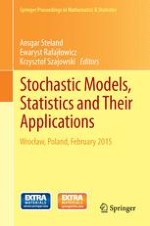This volume presents the latest advances and trends in stochastic models and related statistical procedures. Selected peer-reviewed contributions focus on statistical inference, quality control, change-point analysis and detection, empirical processes, time series analysis, survival analysis and reliability, statistics for stochastic processes, big data in technology and the sciences, statistical genetics, experiment design, and stochastic models in engineering.
Stochastic models and related statistical procedures play an important part in furthering our understanding of the challenging problems currently arising in areas of application such as the natural sciences, information technology, engineering, image analysis, genetics, energy and finance, to name but a few.
This collection arises from the 12th Workshop on Stochastic Models, Statistics and Their Applications, Wroclaw, Poland.
